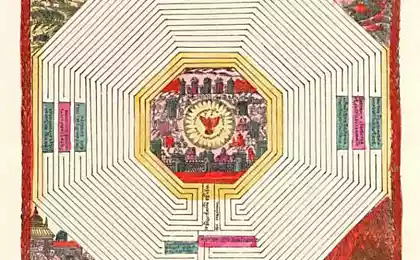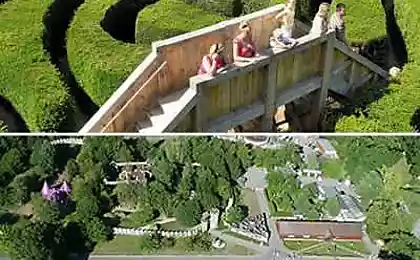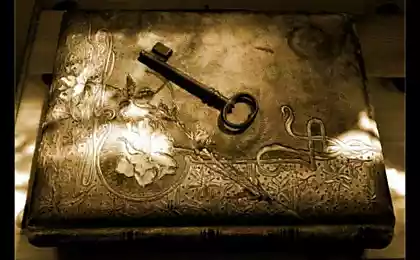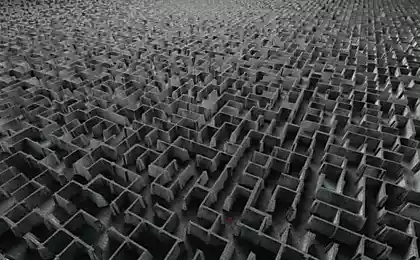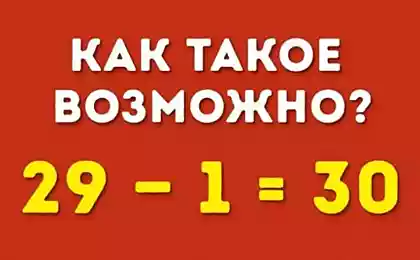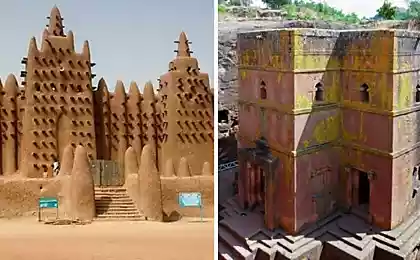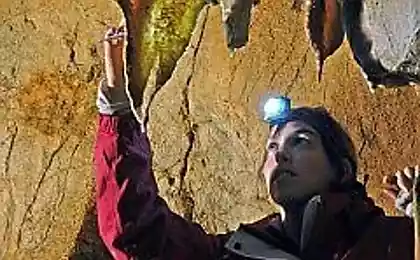5406
Labyrinth of Daedalus
Medieval scholars believed the labyrinth of Daedalus most complex of all ever created.
According to legend, Daedalus created this maze, to conclude in his Minotaur.
Daedalus very cleverly used the psychological factors of behavior that the probability of escape from the labyrinth of almost zero.
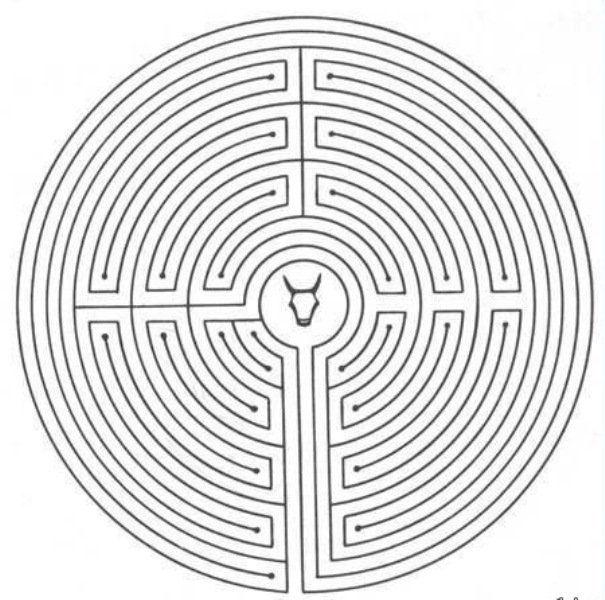
If the passages of the labyrinth was a meter wide, and the walls - to 30 centimeters thick, the only path leading from it would have a length of more than a kilometer. Likely that anyone would rather die of hunger or thirst before found to yield.
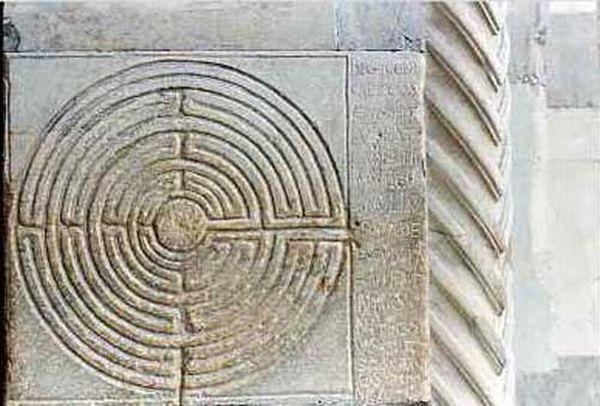
During its long history the Cretan labyrinth several times destroyed and rebuilt again and in 1380 BC, was destroyed and abandoned completely, until the English archaeologist A.Evans not found mysterious hieroglyphic writing in the Oxford Museum. The letter said the ancient labyrinth. In 1900, archaeologist came to Crete and began excavations.
Arthur Evans excavated nearly 30 years and has unearthed not a city but a palace, equal in size to the whole city. This was the famous maze at Knossos, which was a building with a total area of 22 thousand sq. Meters, which took at least 5-6 levels above-ground floors, connected by walkways and stairs, and a number of underground vaults. Cretan labyrinth was not an invention of the ancient and true miracle of architecture, which was something strange reason.
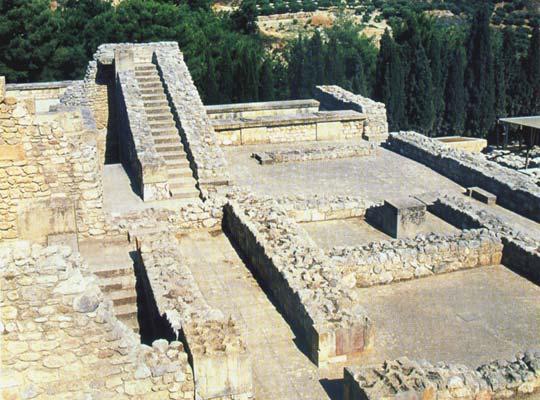
Labyrinth - a real myth is a story about the characters and events that historical science does not recognize real, but seen as a symbol.
We believe that the basis of any myth, any image, any symbolic narrative is a reality, not always historical. Myth accurately describes the reality of psychological: human experiences, mental processes and forms are hidden behind the symbols that have been passed down from generation to generation and finally reached us, that we have solved them, stripped them veil and again saw their hidden meaning, to realize their deep essence.
The myth of the Labyrinth - one of the oldest, and, dare I say it, it is similar to the myths of all ancient civilizations, saying that maze - is impenetrable and obscure way, in complex and winding path which is not surprising to get lost. Sometimes the plot of this myth weaves the story of the extraordinary man, a hero or a mythical character who overcomes the maze and find the key to solving riddles, appeared to him in the form of the path.
When we talk about the labyrinth, I immediately recall the most famous of them, which preserved evidence in Greek mythology - in a simple and accessible way, close to the children's tale: a labyrinth of Crete. I do not want to talk about it just simply, as is the famous legends, we will open the deeper layers of it and analyze archaeological finds made in Crete, to understand what the Cretans and worshiped than in reality was a maze for them. And we'll see how this story will acquire complex symbolic form, and he does not seem to us so childish.
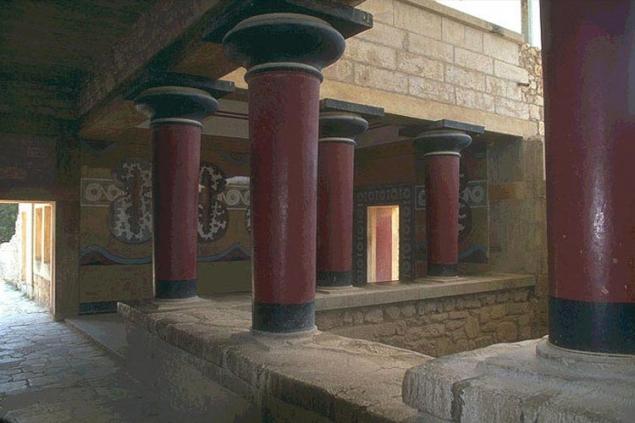
Knossos labyrinth
So, one of the oldest symbols of Crete, associated with its supreme deity, was a double-edged ax is laid, which can be represented in the form of two pairs of horns, one of which is directed upwards and the other downwards. This ax is linked with the sacred bull, whose cult was widespread in Crete. It is called the Labrys and, according to an older tradition, was the instrument by which God, later the Greeks the name of Ares, Dionysus, cut through the first maze.
Here is his story. When Ares, Dionysus, the god of primordial times, very ancient god, came to earth, nothing has not yet been created, nothing has gained more shape, there was only darkness, darkness. But, according to legend, from heaven Ares Dionysus was given a weapon, Labrys, and it is such a tool, this weapon he created the world.
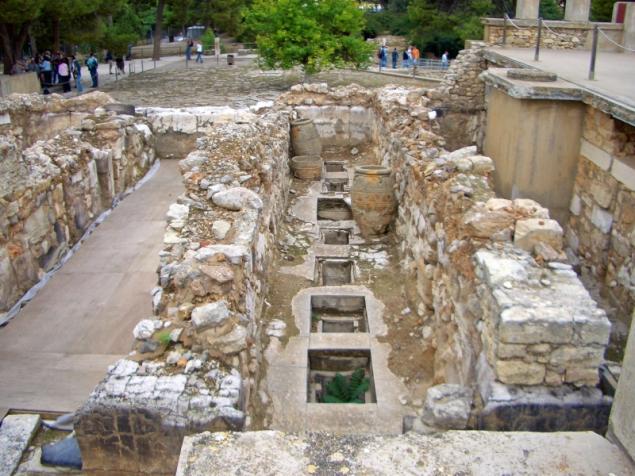
Labyrinth of Daedalus
Ares Dionysus began to walk in the midst of darkness, describing round and round. (This is very interesting, because modern science has discovered that we, being in the dark in a strange room or trying to get out of a spacious but dark areas, often begin to walk around, so what happens when we get lost or wander through the woods . We made this comparison, because from the beginning we want to emphasize that the symbolism of the labyrinth associated with certain atavism inherent in man.)
And Ares Dionysus began to walk around, slicing and cutting through the darkness of the furrows his ax. The road, which he cut through and that with every step becomes lighter, and is called "labyrinth", that is "the way, hewn Labrys».
When Ares, Dionysus, slicing through the darkness, reached the very center, to the purpose of his journey, he suddenly saw that he does not have that ax that was the beginning. His ax is transformed into pure light - he held in his hands the flame, fire, torch, which brightly lit all around, because God has made a double miracle: one with the edge of the ax he sliced the darkness outside, while others - their inner darkness. In the same way, he created light outside, he created light in itself; just as he cut through the outer path, and he cut through the inner path. And when Ares Dionysus reached the center of the maze, he reached the endpoint of the way he reached the light reached the inner perfection.
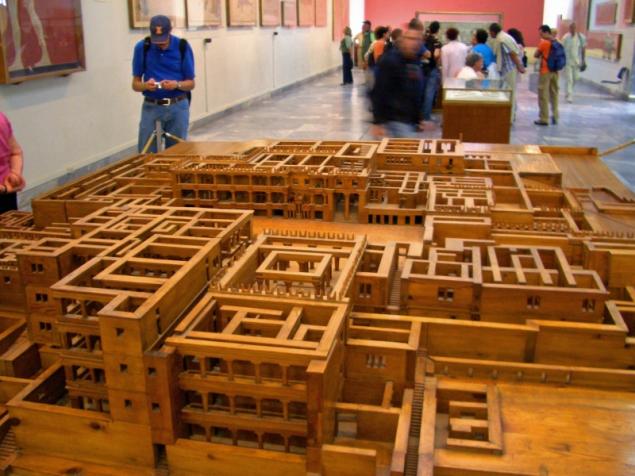
This is the symbolism of the Cretan myth of the labyrinth, the oldest extant. Later legends we know much better.
The most famous of them - the myth of the mysterious maze created by Daedalus, an amazing architect and inventor from ancient Crete, whose name is now always associated with a maze, confusing way.
Grandfather's name, or Dactyl, as it is sometimes called, in the ancient Greek language means "one who creates", "He who works his hands, builds". Daedalus - a symbol of the builder, but not just the creator of the complex of parks and palaces, which is the labyrinth of King Minos, a builder in a deeper sense, perhaps similar to that of the first symbols of the deity, who built the Labyrinth of Light in the darkness.
Labyrinth of Daedalus was neither underground structures or something dark and winding; it was a huge complex of houses, palaces and parks, conceived so that whoever enters into it, could not find a way out. The point is not that the labyrinth of Daedalus was terrible, and that from it was impossible to get out.
Daedalus built the labyrinth for King Minos of Crete, almost legendary character whose name allows us to get acquainted with a very ancient traditions of all the peoples of that era.
Minos lived in a fairy-tale palace, and he had a wife Pasiphae, because of which the whole drama played out associated with the labyrinth.
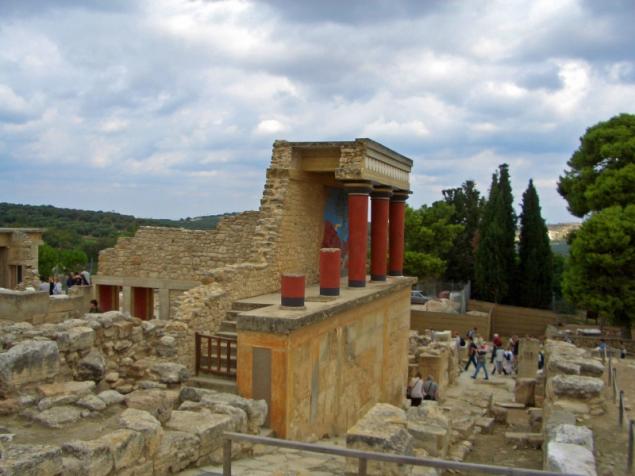
Wanting to be king, Minos counted on the help of another powerful god, lord of waters and oceans Poseidon. To Minos felt his support, Poseidon made the miracle of water and sea foam he created a white bull and gave it to Minos as a sign that he is indeed the king of Crete.
However, according to the Greek myth, it so happened that the wife of Minos is hopelessly in love with the white bull, only dreamed about it and wanted only him. Not knowing how to approach him, she asked Daedalus, a great builder, build huge bronze cow, beautiful and attractive to the bull felt the desire, while Pasiphae hidden inside it.
And the real tragedy is played: Daedalus creates a cow Pasiphae hides in it, the bull is coming to a cow, and from this strange union of a woman and the bull appears half-bull, half man - the Minotaur. This monster, the monster lived in the center of the labyrinth, which at that moment was transformed from a complex of parks and palaces in the darkest place, inspiring fear and sadness, for an everlasting reminder of the misery of the king of Crete.
Some ancient traditions, in addition to Crete, retained less simplistic interpretation of the tragedy Pasiphae and a white bull.
For example, in the legends of pre-Columbian America and India, there is mention of the fact that millions of years ago, at a certain stage of human evolution, people have gone astray and mingled with the animals, and because of this distortion and violation of the laws of nature on the ground were real monsters, hybrids are difficult to even describe. They instilled fear, not only because it has, like the Minotaur, the evil-minded; they bore the stamp of shame from the union that never should have taken place, from the mystery, which was not supposed to open until all of these events are not erased from the memory of mankind.
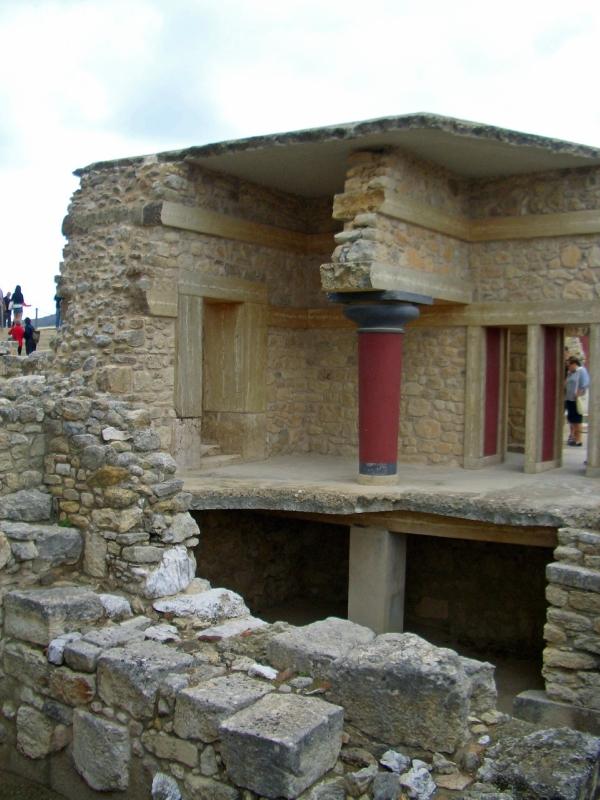
Thus, the relationship with the bull Pasiphae and the birth of the Minotaur is related to the ancient races and to the recent events that have at some point been erased from the memory of people.
On the other hand, the monster, the Minotaur - a blind, amorphous matter without reason and purpose, which lies in the center of the maze, waiting for the victims of his benefactor.
Years pass, continues the legend, and the Minotaur in his maze is really turning into something terrifying. King of Crete, the Athenians defeated in the war, impose their terrible tribute: every nine years, they should send seven boys and seven girls innocent victim Minotaur. When the time comes third payment of tribute, in Athens against the rebels hero has all the advantages - Theseus. He gives a promise not to take the city to the board as long as it does not free of the scourge, yet will not kill the Minotaur.
Theseus himself recorded in the number of young men who have become victims of the monster sent to Crete, captivates the heart of Ariadne, daughter of Minos, and ensure that she gave him a ball of yarn, with which he will be able to pass through the maze and then killing the Minotaur, found from him out. Tangle has played in the history of this vital role. Theseus enters the maze and penetrate farther into his complex and intricate corridors, unwinds the thread. When he reached the center of it because of its enormous power and will kill the Minotaur and find a way out.
In simple and naive stories of Theseus kills the Minotaur sword, sometimes - a dagger. But in the most ancient narratives, as well as the images on ancient Attic vases Theseus kills the Minotaur with a double-bladed ax. And once again the hero, worked his way through the maze, reaching the center, performs a miracle by a Labrys, double ax.
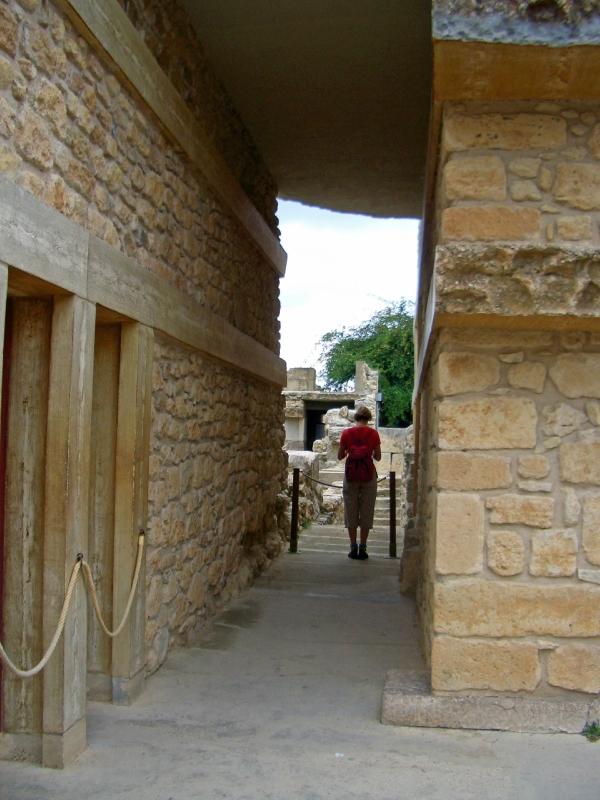
We have to solve another puzzle: Ariadne to Theseus conveys no tangle - and with the spindle thread. And, penetrating deep into the labyrinth, Theseus was his unwinds. But the hero returns to the door, picking up the thread again smatyvaya it, and out of the maze shall have really tangle - perfectly round ball. This symbol is also not new. Spindle with which Theseus goes into the labyrinth symbolizes the imperfection of his inner world that he should "expand", that is to undergo a series of tests. Ball that he creates, selecting yarn - that is perfection, which he achieved, put to death the Minotaur, and thus passed the test and came out of the maze.
Labyrinths, as well as Theseus, there were many. There are some in Spain. All the way to Santiago de Compostela in Galicia, and in all there are an infinite number of images of ancient labyrinths on the stone, which is called a pilgrim to step on the way to Santiago and pass this way, and we are clearly indicate that in their symbolic and spiritual significance of this path is a maze.
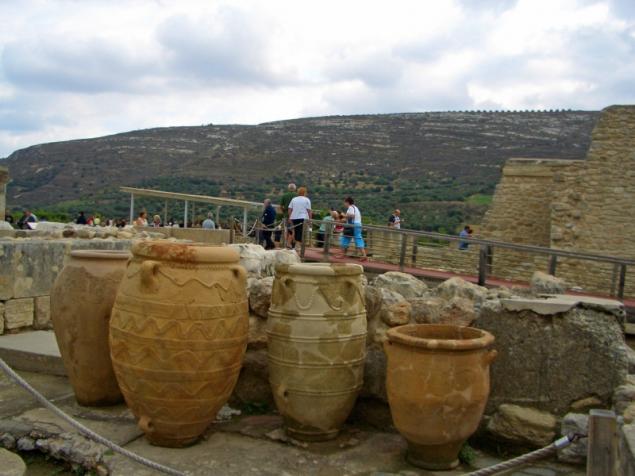
In England, in the famous castle of Tintagel, where, according to legend, King Arthur was born, too, have their mazes.
We meet them in India, where they were a symbol of meditation, concentration, referring to the true center.
In ancient Egypt, in the oldest, founded in the pre-dynastic period, almost a city of Abydos there labyrinth is a circular temple. In his gallery holds a ceremony dedicated to the time of evolution, as well as an endless road that passes people before you reach the center, which meant meeting with a real man.
According to the history of Egypt, a maze of Abydos was, apparently, only a very small part of a huge maze described by Herodotus, who believed the Egyptian labyrinth so huge, amazing and incredible that pales next to him, even the Great Pyramid.
Today we can no longer see this maze, we have only the testimony of Herodotus. Many centuries of features presenting people called him the father of history, Herodotus truthful and give much more similar names, but when not all of his descriptions were confirmed, we naturally decided that Herodotus was not always sure of his words. On the other hand, modern science has confirmed the truth of so many of his descriptions, that is probably worth to be patient and wait - suddenly archaeologists discover a maze, which wrote the Greek historian.
Many labyrinths were in Gothic cathedrals of the Middle Ages. One of the most famous images of which are quite common - a labyrinth laid out on the stone floor of the main cathedral in Chartres. It was created not for someone to get lost in it, but to go on it: it was a kind of initiation path, the path of accomplishment and the way to achieve that was to overcome the candidate, the student, the one who wanted to be accepted into the Mysteries.
Indeed, lost in the labyrinth of Chartres is extremely difficult: all his road exclusively symbolic, all the turns and crossroads visible. The most important thing here - to reach the center of the square stone on which the nails represent the different constellations. For a man it allegorically means to reach Heaven and be on a par with the gods.
It seems that all these myths of antiquity and all symbolic maze of Gothic cathedrals reflect not so much historical reality as psychological. A psychological reality of the maze alive today. If the ancient initiatory talking about the labyrinth as a way of passing that people could realize themselves, today we have to talk about the material and psychological maze.
See material maze is not difficult: the world around us, then, what we encounter in life, the way we live and how to manifest themselves - this is all part of the maze. The complexity of the other: the one who got in Cretan palaces and parks, not even suspected that entered the maze; and we are in our daily lives do not realize that we are in a maze, which draws a person.
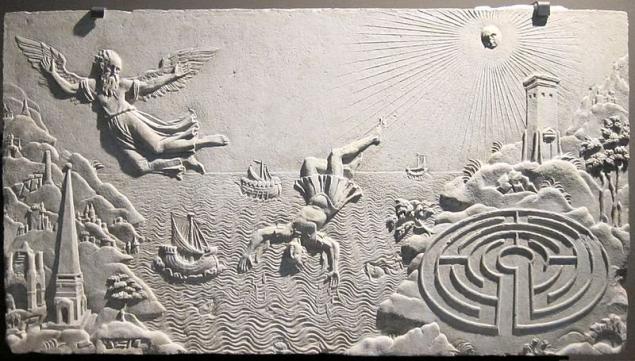
From a psychological point of view of the confusion of Theseus, longed to kill the Minotaur, is of the same nature as the confusion of a man who is confused and scared.
We are afraid because of something we do not know and do not know how; scared because of something we do not understand, and because of this, we feel insecure. Our fear usually manifests itself in the fact that we can not choose, do not know where to go, what to devote his life; it manifests itself in everyday life and eternal mediocrity, exhausting and sad that we are willing to do anything to take no action and no exercise at least a little firmness.
Confusion - another disease that has plagued us in the modern maze on psychologically. This confusion stems from the fact that we ourselves are very difficult to decide who we are, where you came from and where we are going. These three issues - the main reason for our loss, but they are so simple and unsophisticated that seem to us children. There is some sense in our lives other than permanent residence at a loss? Why do we work and why learn? Why do we live and what is happiness? Where are we going? What is suffering and how to recognize it?
From a psychological point of view, we are still wandering in a maze, and although it does not have monsters and narrow corridors, we are constantly beset traps.
And of course it is a myth offers us a solution. Theseus is not included in the maze of empty-handed, and it would be strange if we were looking for with empty hands out of it. Theseus takes with him two things: ax (or sword - as you like) to kill the monster, and the spindle of thread, a ball, to find the way back.
Source: bloggmaster.livejournal.com
According to legend, Daedalus created this maze, to conclude in his Minotaur.
Daedalus very cleverly used the psychological factors of behavior that the probability of escape from the labyrinth of almost zero.

If the passages of the labyrinth was a meter wide, and the walls - to 30 centimeters thick, the only path leading from it would have a length of more than a kilometer. Likely that anyone would rather die of hunger or thirst before found to yield.

During its long history the Cretan labyrinth several times destroyed and rebuilt again and in 1380 BC, was destroyed and abandoned completely, until the English archaeologist A.Evans not found mysterious hieroglyphic writing in the Oxford Museum. The letter said the ancient labyrinth. In 1900, archaeologist came to Crete and began excavations.
Arthur Evans excavated nearly 30 years and has unearthed not a city but a palace, equal in size to the whole city. This was the famous maze at Knossos, which was a building with a total area of 22 thousand sq. Meters, which took at least 5-6 levels above-ground floors, connected by walkways and stairs, and a number of underground vaults. Cretan labyrinth was not an invention of the ancient and true miracle of architecture, which was something strange reason.

Labyrinth - a real myth is a story about the characters and events that historical science does not recognize real, but seen as a symbol.
We believe that the basis of any myth, any image, any symbolic narrative is a reality, not always historical. Myth accurately describes the reality of psychological: human experiences, mental processes and forms are hidden behind the symbols that have been passed down from generation to generation and finally reached us, that we have solved them, stripped them veil and again saw their hidden meaning, to realize their deep essence.
The myth of the Labyrinth - one of the oldest, and, dare I say it, it is similar to the myths of all ancient civilizations, saying that maze - is impenetrable and obscure way, in complex and winding path which is not surprising to get lost. Sometimes the plot of this myth weaves the story of the extraordinary man, a hero or a mythical character who overcomes the maze and find the key to solving riddles, appeared to him in the form of the path.
When we talk about the labyrinth, I immediately recall the most famous of them, which preserved evidence in Greek mythology - in a simple and accessible way, close to the children's tale: a labyrinth of Crete. I do not want to talk about it just simply, as is the famous legends, we will open the deeper layers of it and analyze archaeological finds made in Crete, to understand what the Cretans and worshiped than in reality was a maze for them. And we'll see how this story will acquire complex symbolic form, and he does not seem to us so childish.

Knossos labyrinth
So, one of the oldest symbols of Crete, associated with its supreme deity, was a double-edged ax is laid, which can be represented in the form of two pairs of horns, one of which is directed upwards and the other downwards. This ax is linked with the sacred bull, whose cult was widespread in Crete. It is called the Labrys and, according to an older tradition, was the instrument by which God, later the Greeks the name of Ares, Dionysus, cut through the first maze.
Here is his story. When Ares, Dionysus, the god of primordial times, very ancient god, came to earth, nothing has not yet been created, nothing has gained more shape, there was only darkness, darkness. But, according to legend, from heaven Ares Dionysus was given a weapon, Labrys, and it is such a tool, this weapon he created the world.

Labyrinth of Daedalus
Ares Dionysus began to walk in the midst of darkness, describing round and round. (This is very interesting, because modern science has discovered that we, being in the dark in a strange room or trying to get out of a spacious but dark areas, often begin to walk around, so what happens when we get lost or wander through the woods . We made this comparison, because from the beginning we want to emphasize that the symbolism of the labyrinth associated with certain atavism inherent in man.)
And Ares Dionysus began to walk around, slicing and cutting through the darkness of the furrows his ax. The road, which he cut through and that with every step becomes lighter, and is called "labyrinth", that is "the way, hewn Labrys».
When Ares, Dionysus, slicing through the darkness, reached the very center, to the purpose of his journey, he suddenly saw that he does not have that ax that was the beginning. His ax is transformed into pure light - he held in his hands the flame, fire, torch, which brightly lit all around, because God has made a double miracle: one with the edge of the ax he sliced the darkness outside, while others - their inner darkness. In the same way, he created light outside, he created light in itself; just as he cut through the outer path, and he cut through the inner path. And when Ares Dionysus reached the center of the maze, he reached the endpoint of the way he reached the light reached the inner perfection.

This is the symbolism of the Cretan myth of the labyrinth, the oldest extant. Later legends we know much better.
The most famous of them - the myth of the mysterious maze created by Daedalus, an amazing architect and inventor from ancient Crete, whose name is now always associated with a maze, confusing way.
Grandfather's name, or Dactyl, as it is sometimes called, in the ancient Greek language means "one who creates", "He who works his hands, builds". Daedalus - a symbol of the builder, but not just the creator of the complex of parks and palaces, which is the labyrinth of King Minos, a builder in a deeper sense, perhaps similar to that of the first symbols of the deity, who built the Labyrinth of Light in the darkness.
Labyrinth of Daedalus was neither underground structures or something dark and winding; it was a huge complex of houses, palaces and parks, conceived so that whoever enters into it, could not find a way out. The point is not that the labyrinth of Daedalus was terrible, and that from it was impossible to get out.
Daedalus built the labyrinth for King Minos of Crete, almost legendary character whose name allows us to get acquainted with a very ancient traditions of all the peoples of that era.
Minos lived in a fairy-tale palace, and he had a wife Pasiphae, because of which the whole drama played out associated with the labyrinth.

Wanting to be king, Minos counted on the help of another powerful god, lord of waters and oceans Poseidon. To Minos felt his support, Poseidon made the miracle of water and sea foam he created a white bull and gave it to Minos as a sign that he is indeed the king of Crete.
However, according to the Greek myth, it so happened that the wife of Minos is hopelessly in love with the white bull, only dreamed about it and wanted only him. Not knowing how to approach him, she asked Daedalus, a great builder, build huge bronze cow, beautiful and attractive to the bull felt the desire, while Pasiphae hidden inside it.
And the real tragedy is played: Daedalus creates a cow Pasiphae hides in it, the bull is coming to a cow, and from this strange union of a woman and the bull appears half-bull, half man - the Minotaur. This monster, the monster lived in the center of the labyrinth, which at that moment was transformed from a complex of parks and palaces in the darkest place, inspiring fear and sadness, for an everlasting reminder of the misery of the king of Crete.
Some ancient traditions, in addition to Crete, retained less simplistic interpretation of the tragedy Pasiphae and a white bull.
For example, in the legends of pre-Columbian America and India, there is mention of the fact that millions of years ago, at a certain stage of human evolution, people have gone astray and mingled with the animals, and because of this distortion and violation of the laws of nature on the ground were real monsters, hybrids are difficult to even describe. They instilled fear, not only because it has, like the Minotaur, the evil-minded; they bore the stamp of shame from the union that never should have taken place, from the mystery, which was not supposed to open until all of these events are not erased from the memory of mankind.

Thus, the relationship with the bull Pasiphae and the birth of the Minotaur is related to the ancient races and to the recent events that have at some point been erased from the memory of people.
On the other hand, the monster, the Minotaur - a blind, amorphous matter without reason and purpose, which lies in the center of the maze, waiting for the victims of his benefactor.
Years pass, continues the legend, and the Minotaur in his maze is really turning into something terrifying. King of Crete, the Athenians defeated in the war, impose their terrible tribute: every nine years, they should send seven boys and seven girls innocent victim Minotaur. When the time comes third payment of tribute, in Athens against the rebels hero has all the advantages - Theseus. He gives a promise not to take the city to the board as long as it does not free of the scourge, yet will not kill the Minotaur.
Theseus himself recorded in the number of young men who have become victims of the monster sent to Crete, captivates the heart of Ariadne, daughter of Minos, and ensure that she gave him a ball of yarn, with which he will be able to pass through the maze and then killing the Minotaur, found from him out. Tangle has played in the history of this vital role. Theseus enters the maze and penetrate farther into his complex and intricate corridors, unwinds the thread. When he reached the center of it because of its enormous power and will kill the Minotaur and find a way out.
In simple and naive stories of Theseus kills the Minotaur sword, sometimes - a dagger. But in the most ancient narratives, as well as the images on ancient Attic vases Theseus kills the Minotaur with a double-bladed ax. And once again the hero, worked his way through the maze, reaching the center, performs a miracle by a Labrys, double ax.

We have to solve another puzzle: Ariadne to Theseus conveys no tangle - and with the spindle thread. And, penetrating deep into the labyrinth, Theseus was his unwinds. But the hero returns to the door, picking up the thread again smatyvaya it, and out of the maze shall have really tangle - perfectly round ball. This symbol is also not new. Spindle with which Theseus goes into the labyrinth symbolizes the imperfection of his inner world that he should "expand", that is to undergo a series of tests. Ball that he creates, selecting yarn - that is perfection, which he achieved, put to death the Minotaur, and thus passed the test and came out of the maze.
Labyrinths, as well as Theseus, there were many. There are some in Spain. All the way to Santiago de Compostela in Galicia, and in all there are an infinite number of images of ancient labyrinths on the stone, which is called a pilgrim to step on the way to Santiago and pass this way, and we are clearly indicate that in their symbolic and spiritual significance of this path is a maze.

In England, in the famous castle of Tintagel, where, according to legend, King Arthur was born, too, have their mazes.
We meet them in India, where they were a symbol of meditation, concentration, referring to the true center.
In ancient Egypt, in the oldest, founded in the pre-dynastic period, almost a city of Abydos there labyrinth is a circular temple. In his gallery holds a ceremony dedicated to the time of evolution, as well as an endless road that passes people before you reach the center, which meant meeting with a real man.
According to the history of Egypt, a maze of Abydos was, apparently, only a very small part of a huge maze described by Herodotus, who believed the Egyptian labyrinth so huge, amazing and incredible that pales next to him, even the Great Pyramid.
Today we can no longer see this maze, we have only the testimony of Herodotus. Many centuries of features presenting people called him the father of history, Herodotus truthful and give much more similar names, but when not all of his descriptions were confirmed, we naturally decided that Herodotus was not always sure of his words. On the other hand, modern science has confirmed the truth of so many of his descriptions, that is probably worth to be patient and wait - suddenly archaeologists discover a maze, which wrote the Greek historian.
Many labyrinths were in Gothic cathedrals of the Middle Ages. One of the most famous images of which are quite common - a labyrinth laid out on the stone floor of the main cathedral in Chartres. It was created not for someone to get lost in it, but to go on it: it was a kind of initiation path, the path of accomplishment and the way to achieve that was to overcome the candidate, the student, the one who wanted to be accepted into the Mysteries.
Indeed, lost in the labyrinth of Chartres is extremely difficult: all his road exclusively symbolic, all the turns and crossroads visible. The most important thing here - to reach the center of the square stone on which the nails represent the different constellations. For a man it allegorically means to reach Heaven and be on a par with the gods.
It seems that all these myths of antiquity and all symbolic maze of Gothic cathedrals reflect not so much historical reality as psychological. A psychological reality of the maze alive today. If the ancient initiatory talking about the labyrinth as a way of passing that people could realize themselves, today we have to talk about the material and psychological maze.
See material maze is not difficult: the world around us, then, what we encounter in life, the way we live and how to manifest themselves - this is all part of the maze. The complexity of the other: the one who got in Cretan palaces and parks, not even suspected that entered the maze; and we are in our daily lives do not realize that we are in a maze, which draws a person.

From a psychological point of view of the confusion of Theseus, longed to kill the Minotaur, is of the same nature as the confusion of a man who is confused and scared.
We are afraid because of something we do not know and do not know how; scared because of something we do not understand, and because of this, we feel insecure. Our fear usually manifests itself in the fact that we can not choose, do not know where to go, what to devote his life; it manifests itself in everyday life and eternal mediocrity, exhausting and sad that we are willing to do anything to take no action and no exercise at least a little firmness.
Confusion - another disease that has plagued us in the modern maze on psychologically. This confusion stems from the fact that we ourselves are very difficult to decide who we are, where you came from and where we are going. These three issues - the main reason for our loss, but they are so simple and unsophisticated that seem to us children. There is some sense in our lives other than permanent residence at a loss? Why do we work and why learn? Why do we live and what is happiness? Where are we going? What is suffering and how to recognize it?
From a psychological point of view, we are still wandering in a maze, and although it does not have monsters and narrow corridors, we are constantly beset traps.
And of course it is a myth offers us a solution. Theseus is not included in the maze of empty-handed, and it would be strange if we were looking for with empty hands out of it. Theseus takes with him two things: ax (or sword - as you like) to kill the monster, and the spindle of thread, a ball, to find the way back.
Source: bloggmaster.livejournal.com



